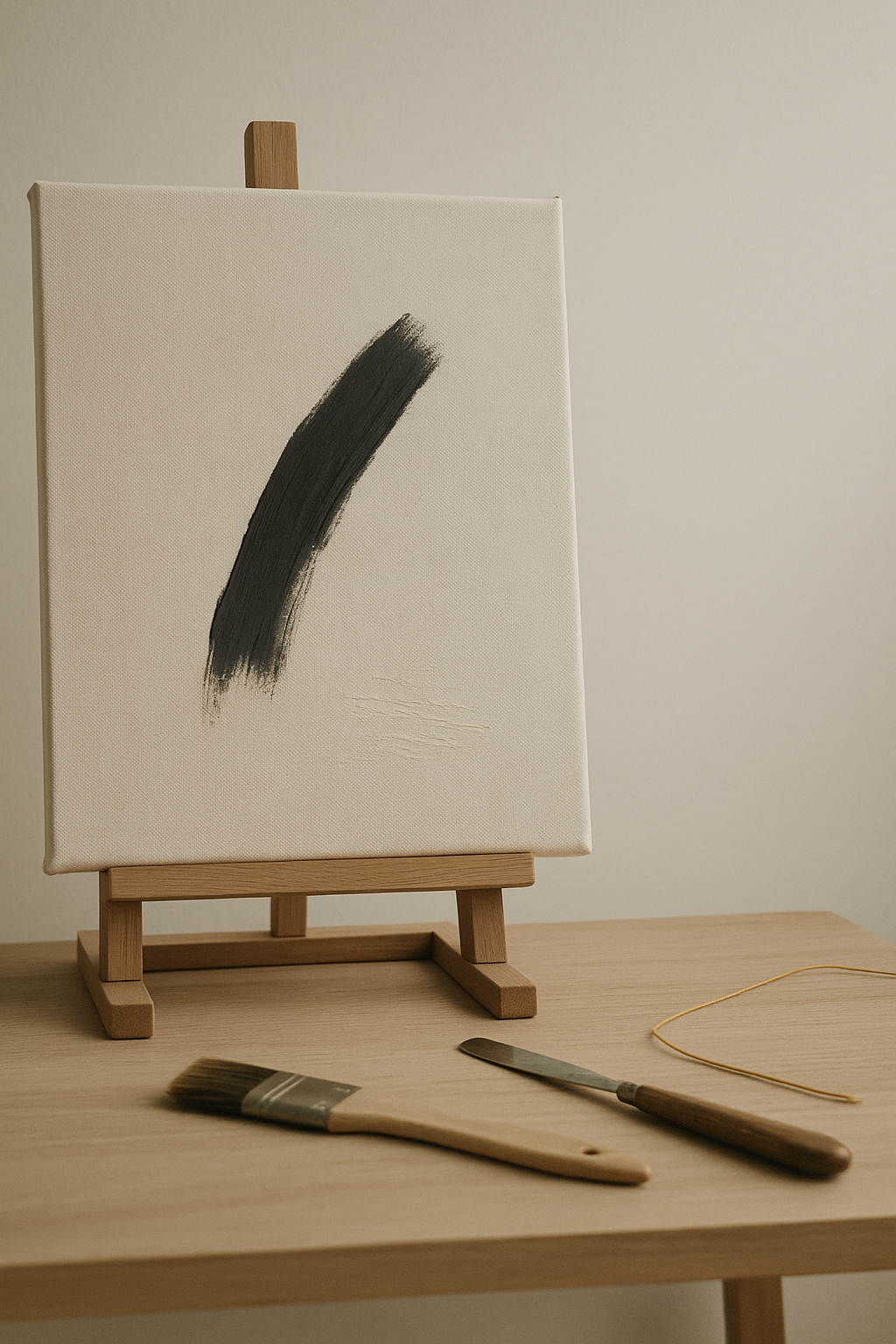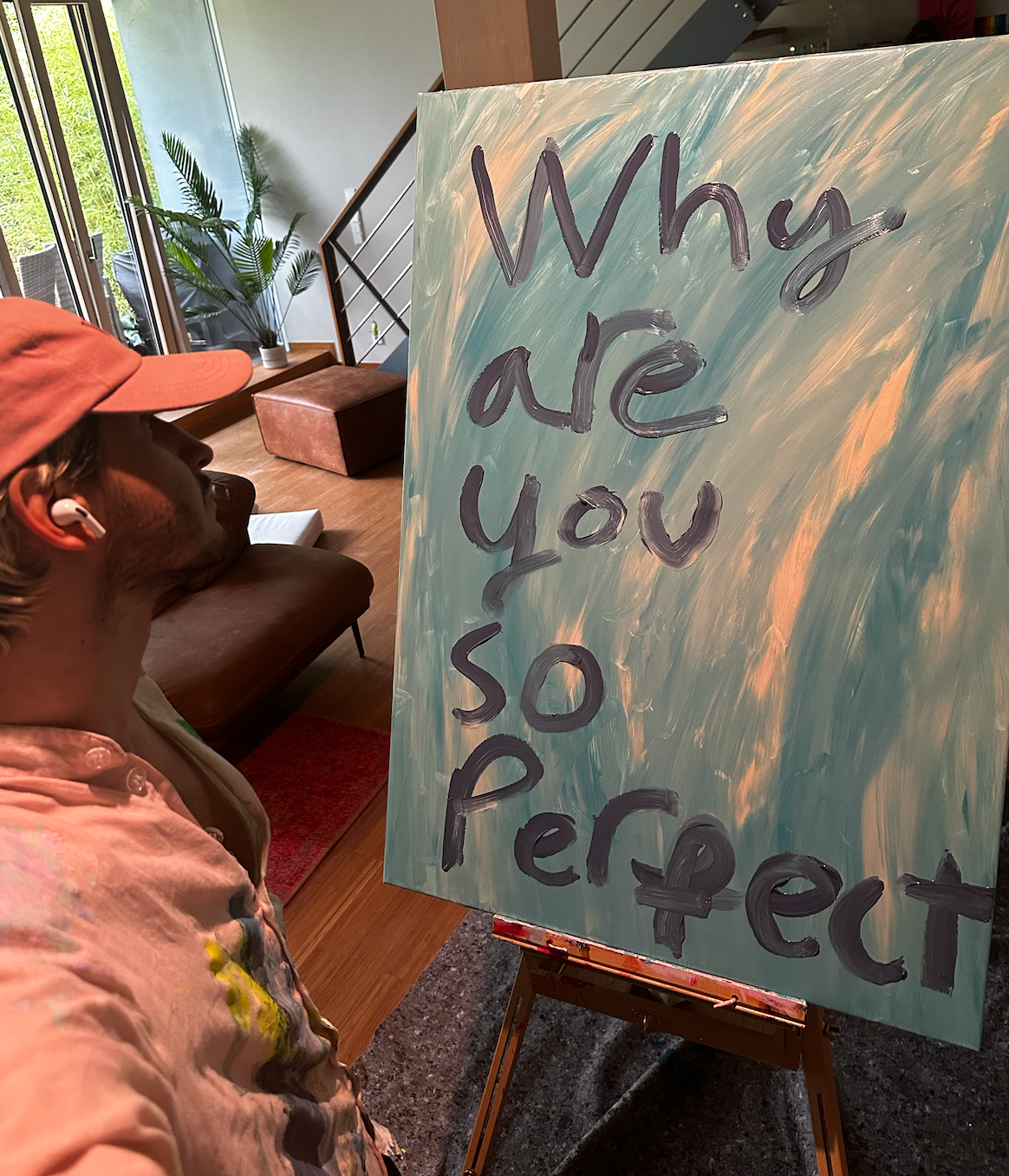Painting as truth practice, what my canvas teaches my company
I paint to listen.
When the brush touches linen, I hear whether a choice is honest or not. The canvas does not care about trends. It reflects only presence, attention, and nerve. That is why I call painting a truth practice. It teaches me how to run HACOY, how to shape Milio, and how to build The Disconnect with integrity that people can feel.

What a truth practice is
A truth practice is any ritual that makes honesty visible. On a canvas, honesty shows up as weight, rhythm, breath, and restraint. In a company, it shows up as fabric that belongs on the body, features that serve a real need, and communication that does not pretend.
Lessons the canvas keeps teaching me
Begin with attention, not tools
Before color, I check my state. Am I rushed or clear. In work, I do the same. No meetings until I know my energy, then I set the tempo for the day.
One decisive move, then breathe
Great paintings are a sequence of bold choices with full stops between them. In business, one meaningful action, then a pause to feel its effect.
Remove to reveal
Every good canvas has edits you cannot see. I scrape paint, I sand, I wipe. In HACOY, I cut options, I keep only what improves feel and function. In Milio, fewer clicks, fewer alerts.
Edges carry truth
Where two colors meet, you see the hand of the painter. In a brand, edges are touch points, labels, seams, onboarding, replies. If the edges are sloppy, trust falls.
Rhythm is the secret ingredient
Dry time, wet time, rest. I plan my week with the same cadence, deep work, movement, social time, silence. Neurodivergent minds thrive on intentional rhythm.
Let accidents speak
A drip can become the center of the piece. In product, unexpected user behavior is information. I turn surprises into features or stories rather than fighting them.
Step back often
Distance creates truth. I step away from the canvas every few minutes. In the company, I walk, I journal, I ask outside eyes before I ship.
Stop before perfect
The last five percent often removes soul. I ship when the work feels alive, not when every pixel is polished. Real people do not need polish, they need presence.

How this shapes HACOY
Materials are not a spreadsheet choice, they are a touch choice. If a fabric does not invite the hand, it does not belong
Fewer drops, deeper intention. We design for real bodies, real ages, real lives.
Story lives in the seams. Care labels, packaging, and copy carry the same calm honesty you feel in the garment.
Rituals that bridge studio and company
- Color test, each quarter I choose three tones that describe the season of the brand, then I align campaigns and UI accents to that feeling.
- Thirty minute sketch before strategy, quick marks on paper to move energy from head to hand, then make decisions.
- Scrap wall, a living board of rejected ideas that still have soul. We revisit it before we create something new.
- Silence blocks, two hours with no input, only output. This is where the real work begins.
The canvas test, a decision filter
When I face a choice, I ask five questions.
- Does this feel alive in my body.
- What am I willing to remove to let it breathe.
- Where are the edges, and are they cared for.
- What is the bold move, and what is the full stop after it.
- If I ship this now, does it honor the season we are in.
If I cannot answer yes to most of these, I wait or I cut.
Try this, even if you do not paint
- Choose a truth practice, painting, clay, ink, guitar, long walks.
- Give it a small, protected place in your week.
- Let it teach you one rule, then apply that rule in your work for seven days.
- Review what changed, keep what created calm and clarity.
Final Thoughts
A company can be a canvas. People can feel when something has soul. If you practice truth in your art, you will carry it into your products, your words, your way of treating others. That is how a brand becomes more than a label. It becomes a way of seeing, and a way of living.
